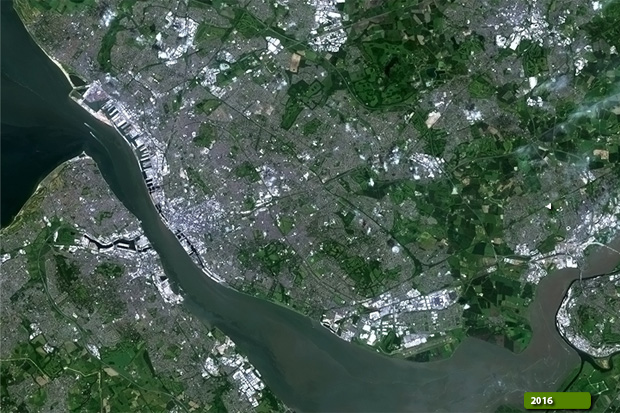|
Liverpool, United Kingdom
Liverpool is a major city and metropolitan borough in north west England. By 2015, the city council area had an estimated population of 478,580 whilst the Liverpool/Birkenhead metropolitan area had a population over 2.2 million. Liverpool is the principal city within the Liverpool City Region. Liverpool sits on the eastern side of the Mersey Estuary and historically lay within the ancient hundred of West Derby in the south west of the county of Lancashire. It became a borough from 1207 and a city from 1880. The expansion of the city in the Industrial Revolution paralleled its growth as a major port, and participation in the Atlantic slave trade. Liverpool was the port of registry of the ocean liner RMS Titanic, and many other Cunard and White Star ocean liners such as the RMS Lusitania, Queen Mary, and Olympic. The city celebrated its 800th anniversary in 2007, and it held the European Capital of Culture title together with Stavanger, Norway, in 2008. Several areas of Liverpool city centre were granted World Heritage Site status by UNESCO in 2004. The Liverpool Maritime Mercantile City includes the Pier Head, Albert Dock, and William Brown Street. Tourism forms a significant part of the city's economy. Labelled the "World Capital City of Pop" by Guinness World Records, the popularity of The Beatles and other groups from the Merseybeat era and later contributes to Liverpool's status as a tourist destination. Liverpool is also the home of two Premier League football clubs, Liverpool and Everton, matches between the two being known as the Merseyside derby. The world-famous Grand National horse race takes place annually at Aintree Racecourse on the outskirts of the city. Liverpool's status as a port city has contributed to its diverse population, which, historically, was drawn from a wide range of peoples, cultures, and religions, particularly those from Ireland and Wales. The city is also home to the oldest Black African community in the country and the oldest Chinese community in Europe. Natives of Liverpool are referred to as Liverpudlians (or less commonly Liverpolitans) and colloquially as "Scousers", a reference to "scouse", a form of stew. The word "Scouse" has also become synonymous with the Liverpool accent and dialect. More information is available on Wikipedia

Today our Landsat image comparison is focused over the city of Liverpool. Located in north-western England, it is the administrative centre of the metropolitan county of Merseyside, on the River Mersey, near its mouth on the Irish Sea. Liverpool is the commercial focus of a large metropolitan area. Although its exports (largely manufactured goods) have declined, it remains one of Britain's major ports. Liverpool is connected to the Wirral peninsula across the river by two motor-vehicle tunnels (1934, 1971) and a railway tunnel. These images acquired with a temporal window of thirty-two years (before/after), demonstrate that the city has experienced a large amount of urban development, especially along the River Mersey, where the territory is greatly changed with the development of new infrastructure. Another aim of these images is to promote the opportunity to download Landsat data through the ESA portals, where images captured every day are made available in near real time to the users and the scientific community. Landsat full resolution data products are freely available for immediate download at:  View Landsat 5 TM high resolution image (JPG 850 KB) View Landsat 8 OLI high resolution image (JPG 915 KB)
|
|||||||||||||||||||||

